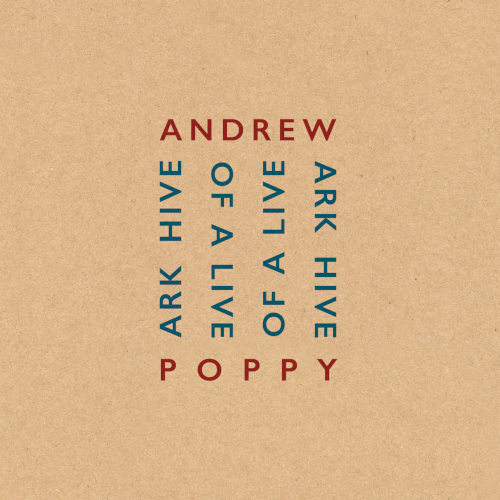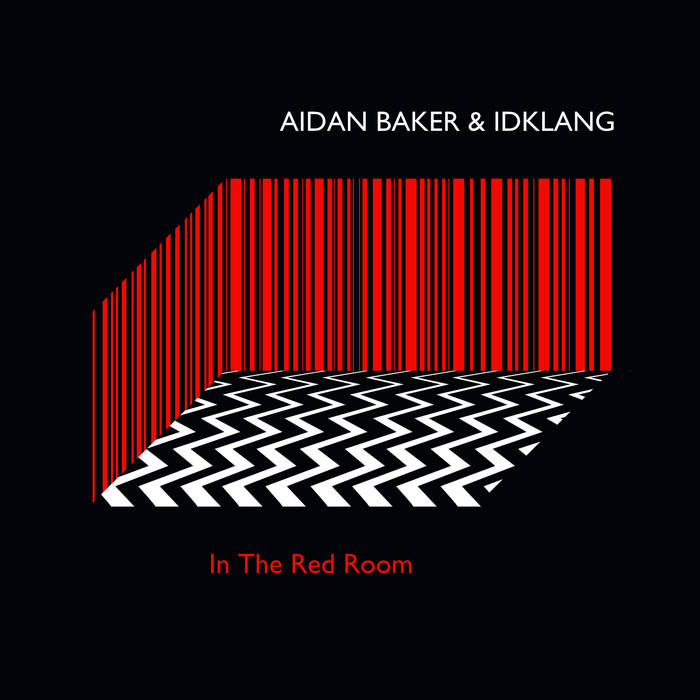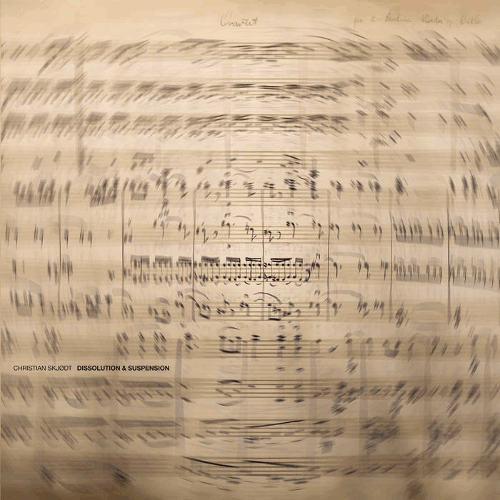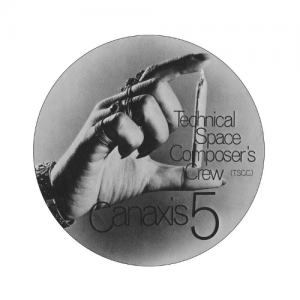
Holger Czukay is a name with which any self-respecting music fan will be only too familiar. With a career that started in 1960 with the introduction of the Holger Schuring Quintet, through time spent as a student of Karlheinz Stockhausen, on through the years spent honing Can into the extraordinary machine that it became and then the best part of a forty-year solo career which was the epitome of inclusion with collaborators flocking from far and wide to work with him.
His restless desire to expand the boundaries of music, how we should think about it and listen to it and how it should be produced and from what, was limitless. Any progressive or experimental music enthusiast has a lot for which to thank Holger Czukay. In an attempt to do just that, and after releasing the amazing five-disc taster from earlier this year, Grönland have chosen to initiate a series of re-releases of complete albums from his sprawling catalogue.
First on the schedule is the album which for me made his name as the father of sampling culture, the extraordinary Canaxis 5, a sound experiment that he undertook with Rolf Dammers as Technical Space Composer’s Crew. Sneaking in and out of Stockhausen’s studio over the course of 1969, using second-hand tape, he constructed two long sound collages that were so ahead of their time that listening to them now, they could have been made yesterday. For “Canaxis”, they constructed the highest but subtlest of drones over which radio waves, outer space transmissions and other odd, synthetic sounds were layered to produce an elegantly unfolding soundscape. Found vocals were then added in and at points some sort of dreamlike zither appears and then drifts away again as distant growling gives the impression that you are in a cave somewhere, creatures lurking in the dark recesses out of sight.
“Boat Woman Song” is constructed from similar parts, but the lilting Vietnamese vocals, taken from an old Folkways LP and a melancholy six-note descending horn loop give it a different vibe entirely. The guttural vocals and wild strumming of the zither give this a more earthbound feel, but under it all is the horn loop that as the song gradually fades out, you realise has been there the whole time, subconsciously tugging at your heartstrings. It is still hard to imagine Holger at work after hours in the studio, cutting and splicing all this material by hand and it is a recording that, if he had accomplished nothing else in music, would have found him a place in the pantheon of musical heroes. This album was produced at the same time that Can was starting and his work with the group throughout the seventies would keep him from delving further into his own ideas until 1979’s Movies.
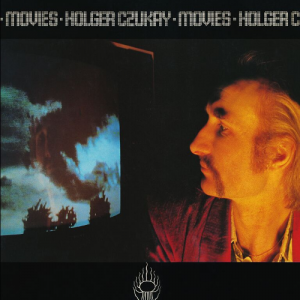 This album once again found him tackling the art of sampling, but taking help and a little influence from his previous Can colleagues where required. David Byrne and Brian Eno must certainly have been cocking an ear to the opener “Cool In The Pool” which with its chippy, almost Caribbean rhythm shook off a lot of the mantra-like density that Can contained. With piano assistance from Can’s Reebop Kwaku Baah (who, I am sure I read somewhere, once punched Holger onstage during a Can gig), Holger’s childlike vocals and some lovely calypso guitar, it is incredibly feel-good. His interjections of french horn along with the random samples are so diverting. Cocks crow as Holger insists “Let’s get hot on the dancing spot” and the radio vocals scrap for space along with his throwaway words.
This album once again found him tackling the art of sampling, but taking help and a little influence from his previous Can colleagues where required. David Byrne and Brian Eno must certainly have been cocking an ear to the opener “Cool In The Pool” which with its chippy, almost Caribbean rhythm shook off a lot of the mantra-like density that Can contained. With piano assistance from Can’s Reebop Kwaku Baah (who, I am sure I read somewhere, once punched Holger onstage during a Can gig), Holger’s childlike vocals and some lovely calypso guitar, it is incredibly feel-good. His interjections of french horn along with the random samples are so diverting. Cocks crow as Holger insists “Let’s get hot on the dancing spot” and the radio vocals scrap for space along with his throwaway words.
The second track “Oh Lord, Give Us More Money” is a Can track in all but name with Jaki Liebezeit (who drums on all tracks) along with Michael Karoli and Irmin Schmidt lending their might. The drums subtly drive against a valiant chord progression with more calypso guitar. It has a restless feel, with Holger’s bass deliciously playful and seductive. The fifteen-minute length allows more of a canvas for his selection of samples — lightning, cats, dogs, his deranged Pinky And Perky vocals, you name it — while the relentless cop-show backing underscores this narrative patchwork.
The exhortation of the title track smacks of ironic desperation as I couldn’t imagine anyone living solely for music more than Holger. The other two tracks follow similar trajectories, with ‘Persian Love” including the same joyful guitar interspersed with mysterious eastern voices, while the longer “Hollywood Symphony” kind of sounds just like the title as imagined by Holger. It is slower and with stringy synths lending a lusher, softer air. The dirty guitar allied to a more varied selection of vocals transports the track through various sections, changing the mood with a bossa beat, or his sausage-finger guitar and circus organ struggling with one another. To have come across this in 1979 would have been thrilling and I don’t think My Life In The Bush Of Ghosts would have been the same without it.
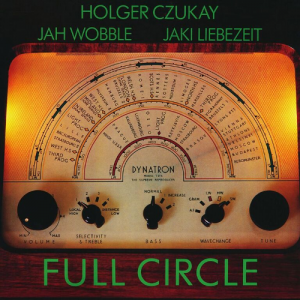 With On The Way To The Peak Of Normal having been reissued in 2015, the next delight in this current series is the collaboration with Jah Wobble and Jaki Liebezeit, Full Circle. How Holger came across Jah Wobble in the first place I have no idea, but it was a match made in bass heaven that certainly gave great results here. The bass-heavy, almost dubby element of the sound and the use of Wobble’s vocals on a few of the tracks clearly pitches the tracks a shade or two darker and more mysterious than what came before.
With On The Way To The Peak Of Normal having been reissued in 2015, the next delight in this current series is the collaboration with Jah Wobble and Jaki Liebezeit, Full Circle. How Holger came across Jah Wobble in the first place I have no idea, but it was a match made in bass heaven that certainly gave great results here. The bass-heavy, almost dubby element of the sound and the use of Wobble’s vocals on a few of the tracks clearly pitches the tracks a shade or two darker and more mysterious than what came before.
Wobble’s muscular dub-inflected bass and Jaki’s sparse echoey beats on opener “How Much Are They?” set a hazy scene that is complemented by Holger’s samples and Jaki’s trumpet with a stark piano appearing here and there, slathered in reverb. The Jamaican feel is less of childlike wonder, but still has a playful air. Across the whole album, if you like the idea of crossing Can with Public Image Limited‘s Metal Box, then this is the answer.
There is a smokey, moody feel when Wobble comes in with his dead-eyed Cockney half-singing on “Where’s The Money?” His voice sounds as though he is singing into a fan and you can imagine them performing this down in a London Underground tunnel somewhere, trains screeching and people passing by as Jaki’s extemporisations on bongos raise the dust.
The album continues over four more tracks in a similar vein, with the eleven-minute “Full Circle” the perfect melding of Wobble’s bass and Holger’s calypso guitar making it that little bit sunnier and shinier. This track feels less of a collaboration and more like Holger having fun with friends, but normal service resumes for the final three tracks, with “Trench Warfare” sounding particularly agitated; Wobble’s voice caught in rip-tides of Holger’s making. It is a little unhinged, with the trumpet adding an extra layer, and it was good to hear Jaki stretching his legs a little again, particularly the jazz-tinged cymbal work of the final track. As a meeting of minds, Full Circle worked really well and it must have been good for Holger to work with another bass player, allowing him more freedom. The collaboration was clearly beneficial as they continued to work together over the years, with the following year’s Snake Charmer LP with The Edge being particularly memorable.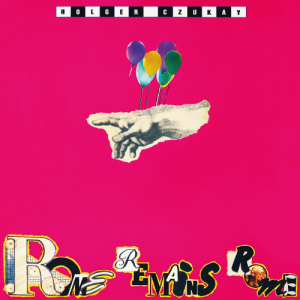
More years passed and Holger signed to Virgin, which must have helped financially. 1984 saw the release of Der Osten Ist Rot; then 1987 saw the release of Rome Remains Rome‘. Once again teaming up with Wobble, who brought with him his friend Ollie Marland on guitar, this album also saw Jaki and Michael Karoli back in tow, plus the Phantom Band‘s Sheldon Ancel on carefree and at times hilarious vocals.
This is another album that is full to bursting with Holger’s sense of fun and the ability that he has to draw that from the collaborators as well. There is whistling and a kind of call and response vocal duet on opener “Hey Baba Reebop”, with the title being repeated over and over. God knows what it means, but Karoli’s guitar and the shuffling mechanical rhythm try to keep things in line, though it is difficult with the random elements that Holger throws in.
The use of a radio broadcast of a papal address on “Blessed Easter” is inspired; as the pope’s benign intonation, joined at times by a heavenly choir, runs through, there is a slow, shaking string line and easy jazz keys that are like the meeting of two worlds, made even more bizarre by the appearance of throat singing at odd intervals.
Wobble may have been the vocalist on “Sudetenland”, which is a little darker. It is unsettled and busy and the vocals are reminiscent of Mark E Smith at his most appealing, Slurred snippets push in and out and as the track progresses, so it slowly seduces and does actually open you up for the crazy “Hit Hit Flop Flop”. Holger had found a particularly good foil with Sheldon, whose vocals are smooth and easy like a Californian sunset. It is a feel-good Latin, cut-up carnival joyride with steel drums spangling and hips swinging irresistibly. It continues into a rumba-like rhythm for “Perfect World”, and you can’t help but smile at the all-around joy. The spacey and opaque “Music In The Air” sees the album out, Karoli’s guitar here sublime as the notes sparkle against the backdrop like stars in the night sky. This is a heavenly treat that was followed by two much more introverted collaboration LPs with David Sylvian.
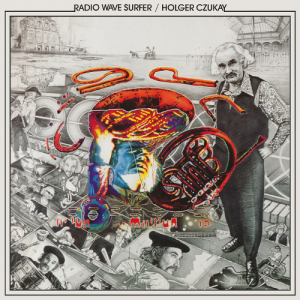 The next solo album came in 1991, and Radio Wave Surfer once again found him in the studio with Karoli, Liebezeit and Ancel. This album is a work of two halves and the first half found the group in the studio working as the sleeve explains “in teamwork, spontaneously”. It was actually recorded in 1987, so flows on from Rome Remains Rome, or may even be from before.
The next solo album came in 1991, and Radio Wave Surfer once again found him in the studio with Karoli, Liebezeit and Ancel. This album is a work of two halves and the first half found the group in the studio working as the sleeve explains “in teamwork, spontaneously”. It was actually recorded in 1987, so flows on from Rome Remains Rome, or may even be from before.
There is more structure to the songs, because they all have Sheldon’s smokey, scat-like voice rolling around on them. The lyrics do sound as though they were plucked from the aether on the spur of the moment. Some of the rhyming is clunky, but it is really hard not to be charmed as the band dig up a kind of jazz-rock or at times proggy storm.
The swirling organ is a new sound, and joins hysteric guitar and a squealing Hammond to lend a lot of melodrama to the proceedings. Sheldon is the wild card here, though and his presence prevents you taking the musicality too seriously as the songs progress with the band jamming on one another, trying to see who can push who in which direction. It is something that would have been fantastic to experience on stage, but interestingly what they chose to perform live on the second side is very different.
In essence, the band are there without a vocalist and into that gap, Holger is working his way through the radio dials. There group leaves more space here than on the first side, giving the perfect opportunity for Holger to fill it up, although at one point his chosen samples are duetting with either Sheldon, who appears on one track, or the wild animal guitar of Karoli that burns through “Ride A Radio Wave”. The foreign language-radio dramas of “Late Night Radio” cause the band to lose it a bit, with mad tempos and random interjections, but this is more about texture and providing a unique listening experience for the audience. It was recorded live in Frankfurt in 1986 and as the sleeve mentions that it was “spontaneously recomposed by Holger on various hilarious nights”. Maybe that says it all.
-Mr Olivetti-

